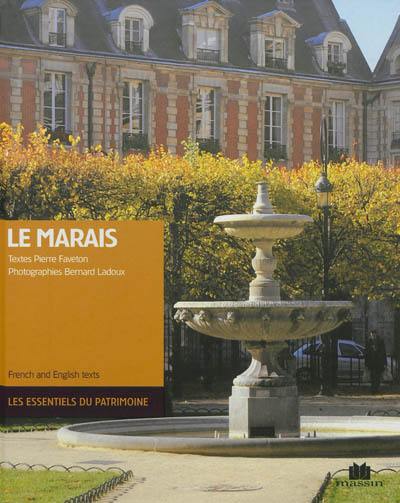
Fiche technique
Format : Relié
Nb de pages : 191 pages
Poids : 786 g
Dimensions : 20cm X 24cm
ISBN : 978-2-7072-0764-7
EAN : 9782707207647
Le Marais
Quatrième de couverture
À la mode au XVIIe siècle, délaissé à la fin du XVIIIe, paupérisé au XIXe, réhabilité aujourd'hui, le Marais a connu une drôle d'histoire. C'est l'un des quartiers les plus séduisants de Paris, riche d'un passé miraculeusement épargné. Tout autour de la place des Vosges, alors place Royale, s'élèvent au XVIIe siècle, entre cour et jardin, les plus beaux hôtels de Paris. L'aristocratie s'y presse. En défaveur au XIXe, le petit peuple s'en empare. Ateliers et artisans s'y installent. Les juifs, immigrés d'Europe de I'Est s'y retrouvent, au début du XXe. C'est le Pletzl. Menaçant ruine, dans les années 60, le Marais est alors sauvegardé, puis restauré. Les hôtels retrouvent leur splendeur passée. Les gays en font leur fief, la mode s'en empare, le Marais devient « branché ». C'est un quartier â découvrir où il fait bon flâner, entre monuments mémorables et bistrots sympa.
The Marais which was fashionable in the 17th century, neglected at the end of the l8th, impoverished in the 19th and has now been renovated has had a curious past. It is on of the most appealing areas of Paris, with a wealth of miraculously spared history. In the 17th century the most attractive town houses in Paris were built around Place des Vosges, in those days Place Royale, between courtyards and gardens. The aristocracy flocked there. Out of favour in the 19th century, the lower classes took it over Workshops and craftsmen moved there. Immigrant Jews from Eastern Europe gathered there at the start of the 20th century. It was known as the Pletzl. Threatening ruin in the 60s, the Marais was then rescued through gradual renovation. The townhouses rediscovered their original splendour. The gay community moved in ; fashion took it by Storm ; the Marais became « hip ». It is a lovely arec to discover whilst strolling between historical monuments and welcoming bistros.





